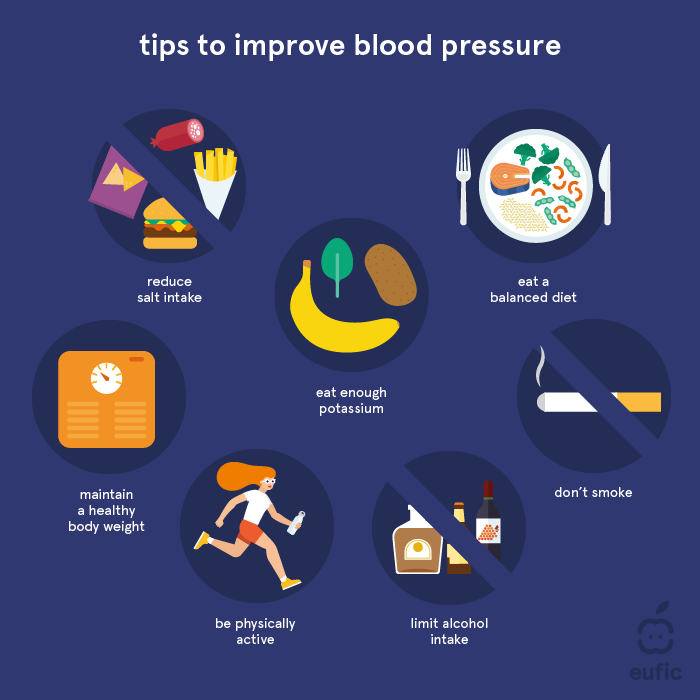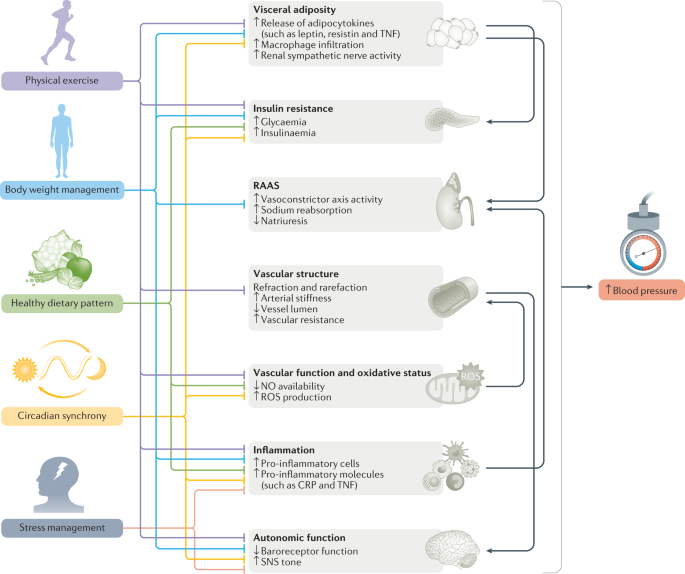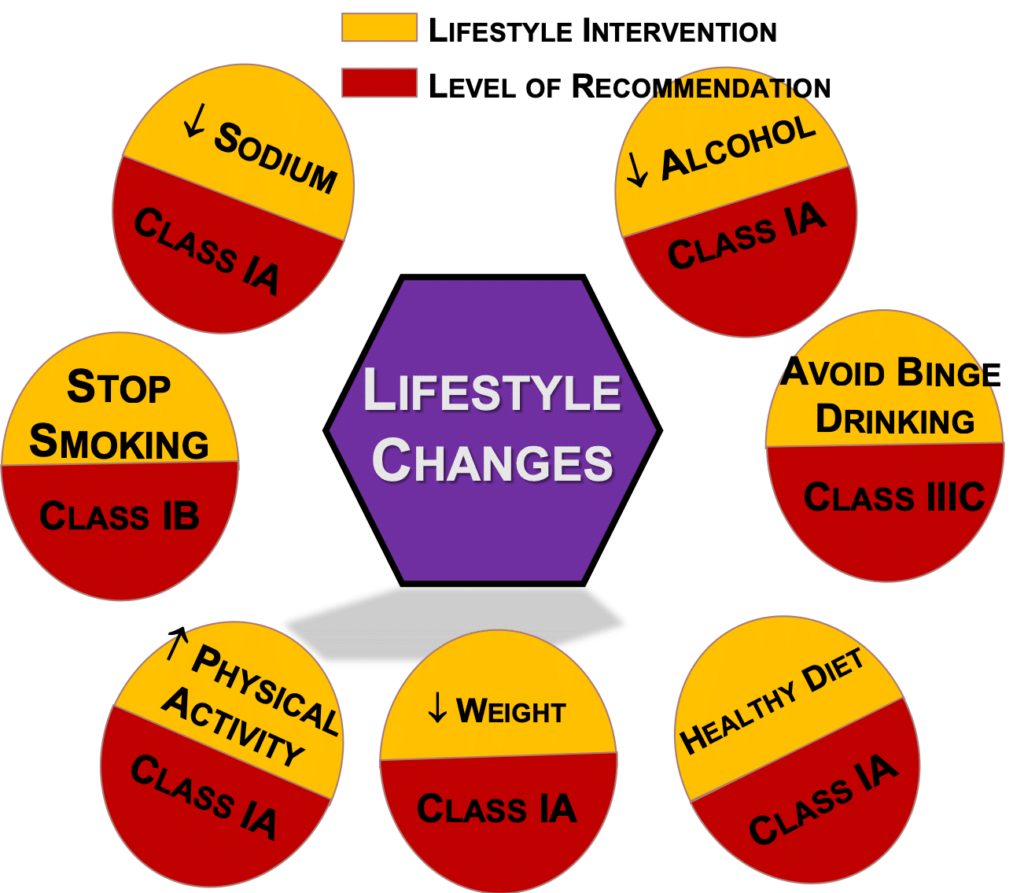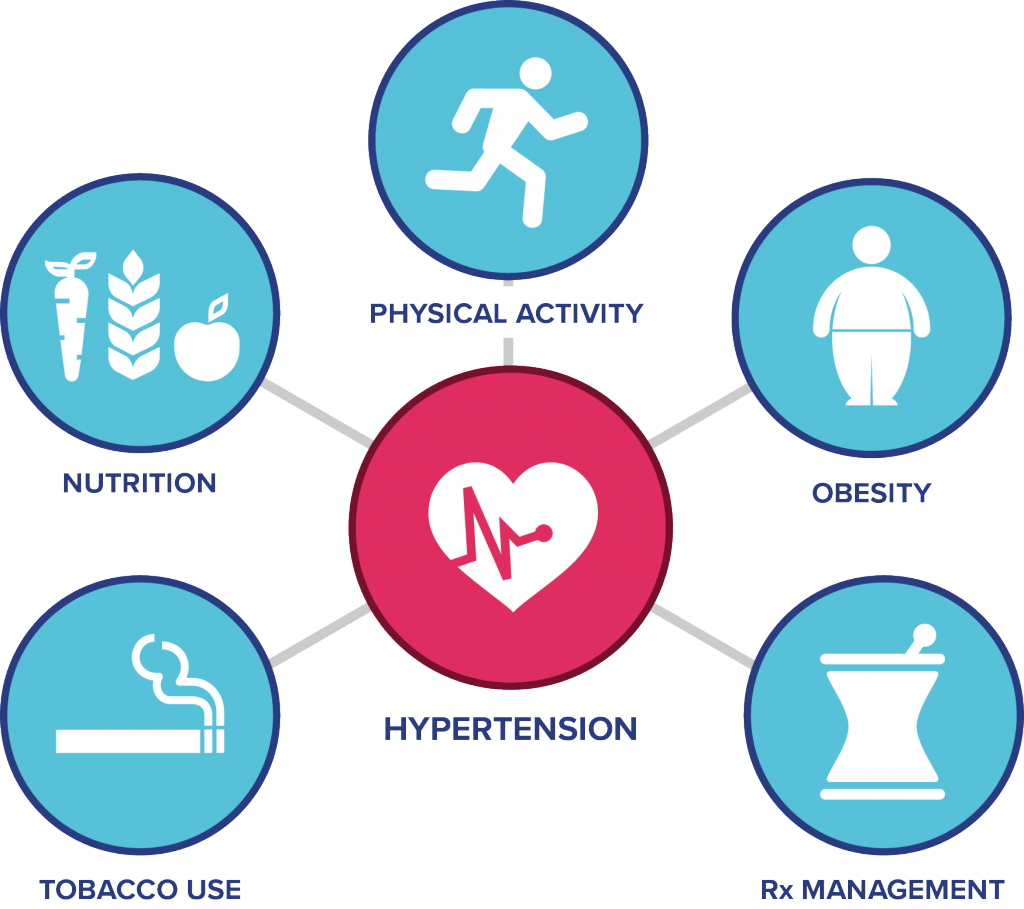You’ve heard it countless times – hypertension, also known as high blood pressure, is a silent killer that affects millions of people worldwide. But did you know that there are simple lifestyle changes you can make to effectively manage this condition? In this article, we will explore a range of strategies that can help you lower your blood pressure and lead a healthier, more balanced life. From adopting a heart-healthy diet to incorporating regular exercise into your daily routine, these lifestyle changes can significantly improve your overall well-being and reduce the risks associated with hypertension. So, if you’re ready to take control of your health, read on to discover the key steps in managing hypertension through lifestyle changes.

Understanding Hypertension
What is hypertension?
Hypertension, commonly known as high blood pressure, is a chronic medical condition characterized by elevated blood pressure levels. Blood pressure is a measure of the force exerted by the blood against the walls of the arteries as it is pumped through the body. When the force is consistently too high, it puts strain on the arteries and organs, increasing the risk of various health problems, including heart disease, stroke, and kidney disease.
Causes of hypertension
Hypertension can arise from a variety of factors, including genetics, unhealthy lifestyle choices, and underlying health conditions. Primary hypertension, also known as essential hypertension, is the most common form and has no identifiable cause. Secondary hypertension, on the other hand, is caused by an underlying medical condition, such as kidney disease, hormonal disorders, or the use of certain medications. Lifestyle factors such as poor diet, physical inactivity, obesity, excessive alcohol consumption, and smoking can also contribute to the development of hypertension.
Prevalence of hypertension
Hypertension is a global health concern, affecting millions of people worldwide. According to the World Health Organization (WHO), approximately 1 in 4 adults worldwide have hypertension. The prevalence varies across different regions and is more common in low- and middle-income countries. Age is also a significant factor, as the risk of hypertension tends to increase with age. It is crucial to understand the prevalence of hypertension to emphasize the importance of early detection, prevention, and management of this condition.
Lifestyle Modifications for Managing Hypertension
When it comes to managing hypertension, lifestyle changes play a crucial role. Adopting a healthy lifestyle can help lower blood pressure levels and reduce the risk of complications associated with hypertension.
Dietary Changes
Modifying your diet is an essential step in managing hypertension. It is important to reduce sodium intake, as a high-sodium diet can contribute to elevated blood pressure levels. Cutting back on processed foods, fast food, and adding less salt to meals can significantly reduce sodium intake. Additionally, increasing potassium intake by consuming fruits, vegetables, and low-fat dairy products can help lower blood pressure levels.
Adopting the Dietary Approaches to Stop Hypertension (DASH) diet is another effective dietary change. The DASH diet emphasizes consuming fruits, vegetables, whole grains, lean proteins, and low-fat dairy products while limiting sodium, saturated fats, and added sugars. This balanced approach to eating has been proven to lower blood pressure and improve overall cardiovascular health.
Exercise and Physical Activity
Regular physical activity is highly beneficial for managing hypertension. Engaging in aerobic exercises, such as brisk walking, cycling, swimming, or jogging, helps strengthen the heart and improve cardiovascular health. Aim for at least 150 minutes of moderate-intensity aerobic exercise or 75 minutes of vigorous-intensity exercise per week. Breaking it down to smaller, more manageable sessions throughout the week is also an option.
In addition to aerobic exercise, incorporating resistance training, such as weightlifting or bodyweight exercises, can help lower blood pressure levels and improve muscle strength. Remember to consult with a healthcare professional before starting any exercise program, especially if you have existing health conditions or concerns.
Weight Management
Maintaining a healthy weight is crucial for managing hypertension. Excess weight, especially around the waistline, increases the risk of developing high blood pressure. Losing even a small amount of weight can have significant benefits in terms of blood pressure control. Incorporating dietary changes and regular exercise into your lifestyle is the key to achieving and maintaining a healthy weight.
Stress Management
Chronic stress and elevated blood pressure often go hand in hand. Finding effective stress management techniques is essential for overall well-being and hypertension management. Identify sources of stress in your life and explore healthy coping mechanisms. Relaxation techniques, such as deep breathing exercises, progressive muscle relaxation, or engaging in hobbies and activities that you enjoy, can help reduce stress levels. Additionally, practicing mindfulness and meditation can promote calmness and reduce anxiety.
Smoking Cessation
Smoking is a modifiable risk factor for hypertension and various other health conditions. The chemicals in tobacco smoke can damage the lining of the arteries, leading to atherosclerosis and increased blood pressure levels. Quitting smoking is one of the most impactful lifestyle changes you can make to improve your overall health. Seek support from healthcare professionals, join smoking cessation programs, or utilize available resources such as medications, counseling, and support groups to help you quit smoking.

Dietary Changes for Hypertension Management
Reducing Sodium Intake
Reducing sodium intake is a vital dietary change for managing hypertension. Consuming excess sodium can contribute to fluid retention, increasing blood pressure levels. Start by reading nutrition labels and avoiding high-sodium processed foods, such as canned soups, frozen meals, and snack foods. Cook meals at home using fresh ingredients and flavor them with herbs, spices, and other salt-free seasonings. Gradually reduce the amount of added salt in your meals to adapt your taste buds to a lower-sodium diet.
Increasing Potassium Intake
Potassium is an essential mineral that plays a role in maintaining healthy blood pressure levels. Increasing potassium intake can counteract the effects of sodium and help lower blood pressure. Foods rich in potassium include bananas, oranges, spinach, potatoes, sweet potatoes, and yogurt. Aim to incorporate these potassium-rich foods into your diet regularly, and if necessary, consult with a healthcare professional regarding potassium supplements.
Adopting the DASH Diet
The DASH diet is an effective eating plan specifically designed for hypertension management. By incorporating the principles of the DASH diet, you can reduce blood pressure and improve overall cardiovascular health. The diet encourages the consumption of fruits, vegetables, whole grains, lean proteins, and low-fat dairy products. It also emphasizes reducing sodium, saturated fats, and added sugars. Following the DASH diet not only benefits your blood pressure but also promotes overall health and well-being.
Exercise and Physical Activity for Hypertension Management
Types of Exercises
When it comes to managing hypertension, incorporating a variety of exercises can be highly beneficial. Aerobic exercises, such as brisk walking, cycling, swimming, or dancing, help strengthen the heart and improve cardiovascular fitness. Resistance training exercises, such as weightlifting or bodyweight exercises, promote muscle strength and aid in lowering blood pressure. Flexibility and balance exercises, such as yoga or tai chi, can also be incorporated for overall physical well-being.
Recommended Exercise Duration and Frequency
To effectively manage hypertension through physical activity, aim for at least 150 minutes of moderate-intensity aerobic exercise or 75 minutes of vigorous-intensity exercise per week. These recommendations can be achieved through various combinations of exercise sessions. For example, you can divide the time into 30-minute sessions, five days a week, or 25-minute sessions, six days a week. Consult with a healthcare professional to personalize your exercise plan to meet your specific needs and abilities.
Benefits of Physical Activity
Engaging in regular physical activity offers numerous benefits for hypertension management. Exercise helps to lower blood pressure, improve cardiovascular health, reduce body weight, and enhance overall well-being. It promotes better blood flow, strengthens the heart, and improves the ability of blood vessels to dilate and contract. Regular exercise also helps to reduce stress, improve sleep quality, boost mood, and increase energy levels. By incorporating exercise into your daily routine, you can take control of your hypertension and enhance your overall health.

Weight Management and Hypertension
Understanding the Link between Weight and Blood Pressure
Maintaining a healthy weight is crucial for managing hypertension. Excess body weight, especially if it is concentrated around the waistline, increases the risk of developing high blood pressure. As body weight increases, the heart has to work harder to pump blood, putting more strain on the arteries. This can lead to hypertension and potential complications such as heart disease or stroke.
Benefits of Weight Loss for Blood Pressure Control
Losing even a small amount of weight can have significant benefits for blood pressure control. Each kilogram (2.2 pounds) of weight loss can lead to a reduction in systolic blood pressure by approximately 1 mmHg. Losing excess body weight reduces the workload on the heart, improves blood vessel health, and helps to lower blood pressure. By achieving and maintaining a healthy weight, you can significantly reduce your risk of hypertension and its associated complications.
Strategies for Weight Management
To effectively manage weight and control hypertension, it is important to adopt healthy lifestyle strategies. Incorporate dietary changes, such as consuming a balanced diet with appropriate portion sizes and staying hydrated. Engage in regular physical activity to promote weight loss, muscle toning, and cardiovascular fitness. Avoid crash diets or extreme weight loss measures, as they can be detrimental to your overall health. Instead, focus on making sustainable lifestyle changes that you can maintain in the long run.
Stress Management Techniques
Identifying Sources of Stress
Identifying sources of stress is an important step in managing hypertension effectively. Stress, whether it is related to work, relationships, finances, or other aspects of life, can have a significant impact on blood pressure levels. Take the time to identify the factors that contribute to your stress levels. This awareness will enable you to address them appropriately and implement stress management techniques.
Relaxation Techniques
Relaxation techniques are effective in reducing stress and managing hypertension. Deep breathing exercises, also known as diaphragmatic breathing, can help activate the body’s relaxation response and decrease blood pressure. Progressive muscle relaxation involves tensing and then releasing different muscle groups to promote relaxation. Other techniques, such as listening to calming music, taking a warm bath, or engaging in activities you enjoy, can also help reduce stress levels.
Mindfulness and Meditation
Practicing mindfulness and meditation can greatly benefit your mental and physical well-being, including hypertension management. Mindfulness involves focusing on the present moment, being aware of your thoughts and feelings without judgment. Meditation is a practice that promotes relaxation and mental clarity. Both techniques can help reduce stress, lower blood pressure, and improve overall emotional health. Consider incorporating mindfulness and meditation into your daily routine for optimal stress management.

The Effects of Smoking on Hypertension
Smoking as a Risk Factor for Hypertension
Smoking is a significant risk factor for hypertension. The chemicals in tobacco smoke can damage the lining of the arteries, leading to atherosclerosis, reduced blood flow, and elevated blood pressure levels. The nicotine in cigarettes causes blood vessels to constrict and the heart to beat faster, temporarily raising blood pressure. However, the long-term effects of smoking on blood pressure are much more concerning, as it increases the risk of developing hypertension and cardiovascular diseases.
Benefits of Quitting Smoking
Quitting smoking is one of the most impactful lifestyle changes you can make to manage hypertension. When you quit smoking, your blood pressure begins to decrease almost immediately, and the risk of heart disease and stroke also decreases over time. Your heart and lungs become healthier, and the overall risk of various health problems associated with smoking significantly reduces. Support is available through healthcare professionals, smoking cessation programs, and resources to help you quit smoking successfully.
Tools and Resources for Smoking Cessation
Several tools and resources are available to assist in smoking cessation. Nicotine replacement therapies, such as nicotine patches, gum, or inhalers, can help relieve withdrawal symptoms when quitting smoking. Prescription medications, such as bupropion or varenicline, may also be prescribed by healthcare professionals to aid in smoking cessation. Additionally, support groups, counseling services, and helplines are valuable resources that can provide guidance and encouragement throughout the quitting process. Remember, you don’t have to do it alone – reach out for support to increase your chances of successfully quitting smoking.
Monitoring Blood Pressure
Home Blood Pressure Monitoring
Regular monitoring of blood pressure at home is an important aspect of hypertension management. Home blood pressure monitoring allows you to track your blood pressure levels in a familiar and relaxed environment. It provides valuable information to you and your healthcare professional, helping guide treatment decisions and evaluate the effectiveness of lifestyle modifications and medications. Follow the instructions provided by your healthcare professional for accurate blood pressure measurements and record the results for review during your regular check-ups.
Importance of Regular Check-Ups
Regular check-ups with a healthcare professional are essential for effective hypertension management. These appointments allow your healthcare professional to monitor your blood pressure levels, assess your overall health, and make any necessary adjustments to your treatment plan. Regular check-ups also provide an opportunity to discuss any concerns or questions you may have regarding your hypertension management. Working together with your healthcare professional ensures that your treatment is tailored to your specific needs and provides the best possible outcomes.
Utilizing Technology for Blood Pressure Tracking
In today’s digital age, there are various technological tools available to facilitate blood pressure tracking. Smartphone applications, wearable devices, and home blood pressure monitors with digital tracking capabilities enable you to easily monitor and track your blood pressure readings. Some apps even provide insights, reminders, and trends to help you manage your hypertension more effectively. However, it is important to note that these tools should be used in conjunction with guidance from healthcare professionals to ensure accuracy and proper interpretation of the data.

Support Systems for Hypertension Management
Importance of Social Support
Having a strong support system is crucial for successful hypertension management. It is essential to share your journey with trusted family members or friends who can provide encouragement, accountability, and understanding. Social support plays a significant role in reducing stress, promoting adherence to healthy lifestyle changes, and providing emotional well-being throughout the process of managing hypertension.
Joining Support Groups
Joining support groups or attending group sessions specifically designed for hypertension management can be highly beneficial. These groups provide a safe space to share experiences, learn from others in similar situations, and receive guidance from healthcare professionals. Support groups often offer educational resources, coping strategies, and opportunities to ask questions. Participating in these groups can foster motivation, build resilience, and provide a sense of community as you navigate through your hypertension management journey.
Family Involvement in Lifestyle Changes
Involving your family in your lifestyle changes can further enhance the effectiveness and success of managing hypertension. Encouraging family members to adopt healthy eating habits, engage in regular physical activity, and follow stress management techniques can create a supportive environment. When everyone is working together towards a healthier lifestyle, it becomes easier to maintain the necessary changes and sustain long-term blood pressure control.
Complementary and Alternative Therapies
Role of Complementary Therapies in Hypertension Management
Complementary therapies, in conjunction with conventional medical treatment, can play a supportive role in managing hypertension. These therapies aim to promote relaxation, reduce stress, and improve overall well-being. Examples of complementary therapies include acupuncture, aromatherapy, massage therapy, and yoga. However, it is important to consult with healthcare professionals before incorporating these therapies to ensure their safety and effectiveness in your specific situation.
Acupuncture and Hypertension
Acupuncture is a technique derived from traditional Chinese medicine that involves the insertion of fine needles at specific points on the body. Some studies suggest that acupuncture may have a positive impact on blood pressure control by improving blood flow, reducing stress, and promoting relaxation. However, more research is needed to fully understand the effectiveness of acupuncture as a complementary therapy for managing hypertension.
Effectiveness of Herbal Remedies
Certain herbal remedies are believed to have potential benefits for hypertension management. For example, garlic, Hawthorn berries, and green tea extract are often considered to have blood pressure-lowering effects. However, the effectiveness and safety of herbal remedies can vary, and interactions with medications should be carefully addressed. It is essential to consult with healthcare professionals before incorporating any herbal remedies into your regimen to ensure they are appropriate for your individual needs.
In conclusion, hypertension is a common health condition that can have serious consequences if left unmanaged. By making positive lifestyle changes, such as adopting a healthy diet, engaging in regular physical activity, managing stress, quitting smoking, and implementing other strategies discussed in this article, you can effectively manage hypertension and reduce your risk of complications. Remember, it’s never too late to take control of your blood pressure and maintain a healthy lifestyle. Seek guidance and support from healthcare professionals, engage with support systems, and celebrate each step towards better health.